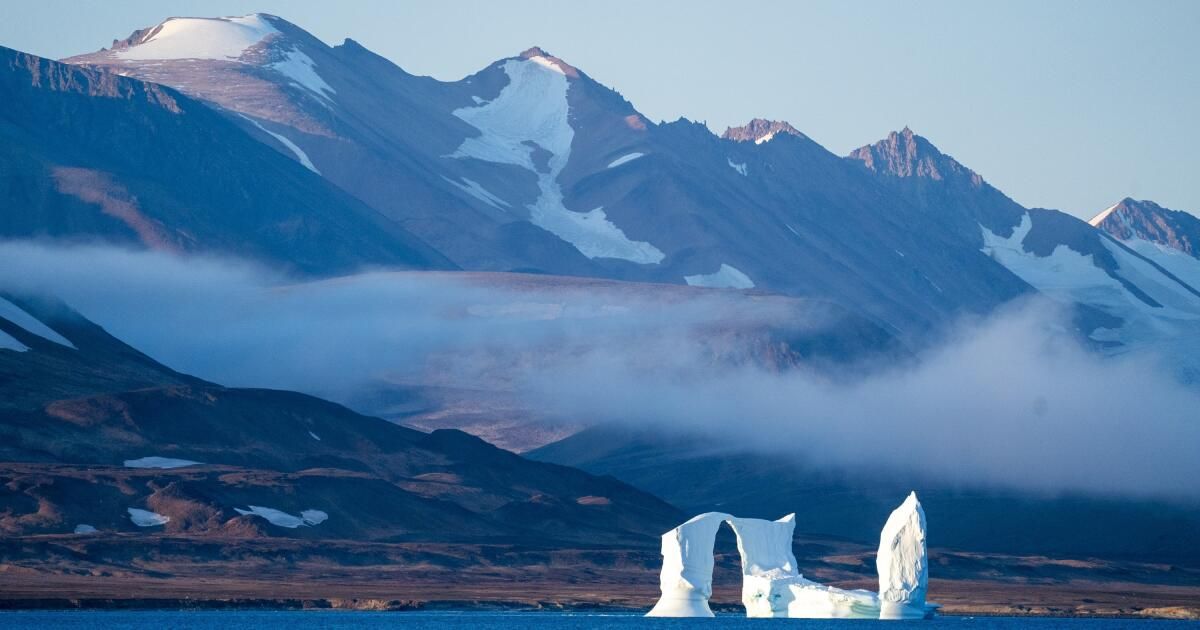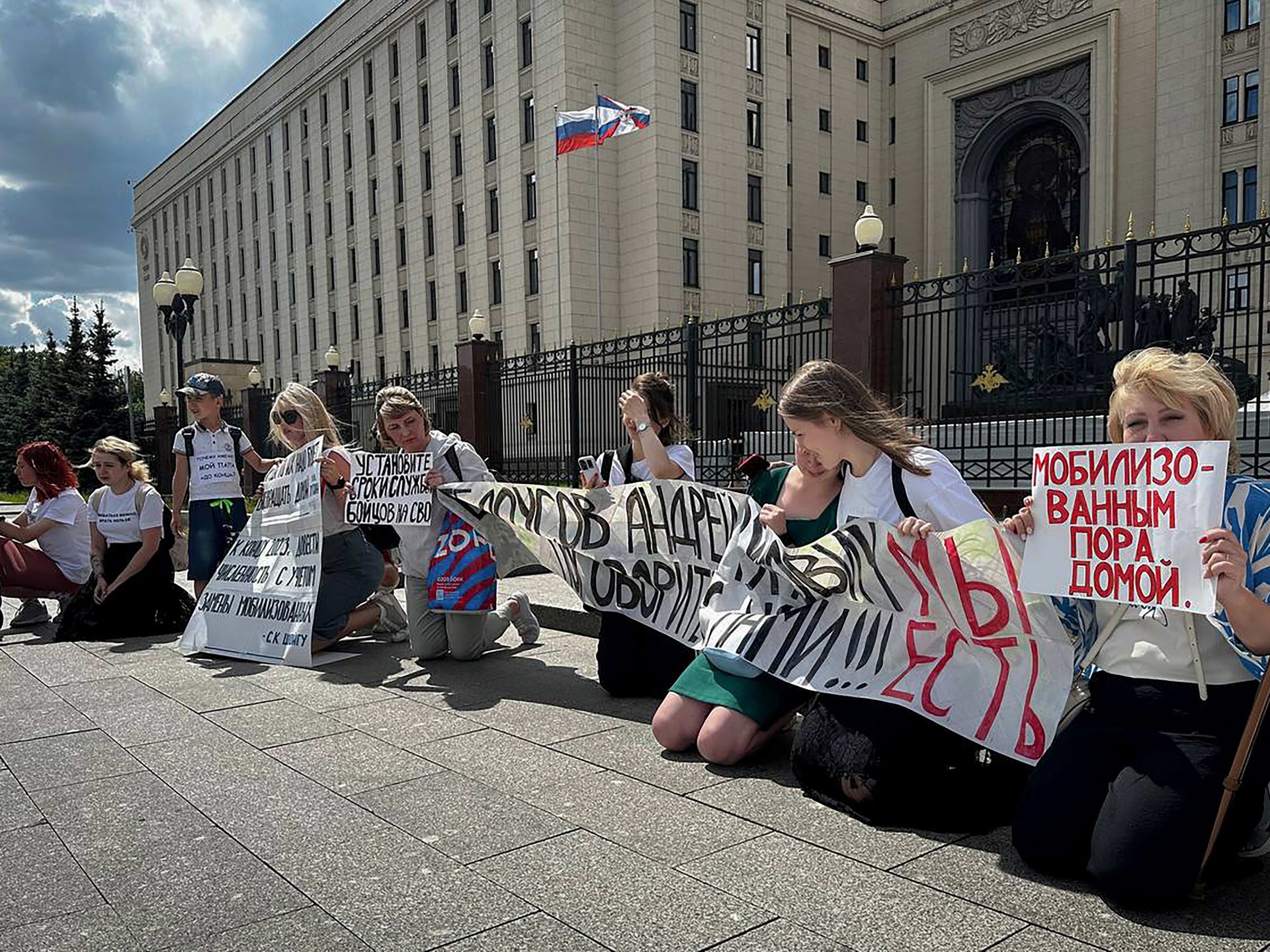The loss of Arctic sea ice has long been a graphic measure of human-caused climate change, with harrowing images of polar bears suffering illustrating a worsening planetary crisis. Now, new research has found that Arctic Ocean sea ice is shrinking even faster than previously thought and that the Arctic could begin to see its first “ice-free” days in the current decade.
That worrying milestone could occur before the end of the decade or sometime in the 2030s, up to 10 years earlier than previous projections, according to a study published Tuesday in the journal Nature Reviews Earth and Environment. The study defines “ice-free” as when the Arctic Ocean has less than 1 million square kilometers, or 386,000 square miles, of ice.
Aggressive and impactful reporting on climate change, the environment, health and science.
“It's no longer a remote possibility that it could happen at some point,” said Alexandra Jahn, lead author of the study and associate professor of atmospheric and oceanic sciences at the University of Colorado Boulder. “Unfortunately, this happens in basically every emissions scenario in our climate models, so it looks like it's going to happen, and so we need to be prepared for it.”
By mid-century (2035 to 2067), the Arctic could experience consistent ice-free conditions in September, the month when sea ice concentrations are typically at their lowest, according to the study.
The precise timing of such losses depends on how soon humanity is able to reduce the fossil fuel emissions that are contributing to global warming. According to the study, in a high-emissions scenario in which fossil fuel use continues unabated, the Arctic would be ice-free between the months of May and January by 2100.
Even in a low emissions scenario, the Arctic would still be ice-free between August and October of that same year.

A drop of water falls from an iceberg at the COP26 UN Climate Summit in Glasgow, Scotland, in November 2021. The four-tonne block of ice, originally part of a larger glacier, was brought from Greenland to Glasgow by climate scientists as a statement. to world leaders about the magnitude of the climate crisis and a visible reminder of what Arctic warming means for the planet.
(Alastair Grant/Associated Press)
Climate models dating back to the 1970s have long predicted the possibility of reaching ice-free summer conditions in the Arctic with sufficient warming, but the latest research has helped pin down how quickly it can happen, Jahn said.
The consequences of such a change are not yet fully understood, but considerable effects on ecological systems, wildlife, and local and global climates are likely.
“The more emissions the world puts into the atmosphere, the more months we can see an ice-free Arctic,” Jahn said. He added that even in a reduced emissions scenario, “children born today will see ice-free conditions at least in September, and every other year in October and August.”
The study paints a vivid picture of a changing planet where the previously “white Arctic” defined by its ice transforms into a “blue Arctic” characterized by open water.
However, the decline of Arctic sea ice has been well documented since at least 1979, when continuous satellite observations began. Since then, there has been about a 40% loss in surface area and a 50% loss in thickness, according to Walter Meier, principal investigator at the National Snow and Ice Data Center, who was not involved in the study.
Meier said the study's assessments are plausible, although the more pressing finding involving an ice-free day within the decade “may be a little aggressive.”
Still, he said, “given the emissions scenarios we're following, it's really a question of when, not if, we will have ice-free conditions.”
In fact, the study comes as the planet continues to experience unprecedented warming driven by climate change and this year's El Niño, with January becoming the eighth consecutive month to experience record heat, according to the National Oceanic and Atmospheric Administration. .
Data for February was not yet available, although early findings point to continued warming, including the warmest meteorological winter in the United States.
Global surface temperature in January was 2.29 degrees above the 20th century average of 54 degrees, NOAA found. Global sea ice extent was the seventh smallest in the 46-year record at 6.90 million square miles, or 440,000 square miles below the 1991-2020 average, for the winter month.
Jahn said some research has found there is still a 10% to 20% chance of completely avoiding an ice-free Arctic if global temperatures remain below 1.5 degrees Celsius of warming over an average of 20 to 30 years. The 1.5 degree benchmark is an internationally agreed threshold to reduce the worst effects of climate change.
“If we stopped all emissions tomorrow – which is not physically possible, but if we could – then we could still avoid it,” Jahn said. “It's not a guarantee, but there is a possibility.”
But even that possibility seems to be fading. In January, the global average temperature measured 1.66 degrees Celsius above the pre-industrial reference period, according to the European Union's Copernicus Climate Change Service.
The implications of an ice-free Arctic Ocean, which spans an area roughly equivalent to the size of the continental 48 states of the United States, are worrying. According to the study, the loss of sea ice would contribute to increased wave heights and increased coastal erosion in the region, among other things. It would also threaten the survival of ice-dependent animals such as polar bears and seals, and trigger the migration of some fish and other species.
“There will be a big change in what kind of species we see and where, and which ones will end up being dominant and surviving,” Jahn said. The outlook for polar bears is especially bleak because they hunt primarily on sea ice, and “if there is an open sea season for several months of the year, then polar bears can no longer survive.”

The sun sets over a large iceberg near Kulusuk, Greenland, in August 2019.
(Felipe Dana/Associated Press)
For better or worse, the loss would also increase economic activity in the Arctic by opening up more shipping routes and areas for resource exploration, the study says.
Other potential outcomes include reductions in albedo (or the amount of light reflected by ice), which would accelerate human-caused warming by creating an amplifying feedback loop. More controversial research argues that a decline in Arctic sea ice could affect the jet stream and its associated weather patterns, and even lead to more favorable fire conditions in the western US.
Many changes are already underway, NSIDC's Meier said.
“It's not like flipping a switch where there's an Arctic Ocean type of environment, and then it's ice-free and suddenly it's something else,” he said. “We have already seen many changes in the Arctic Ocean and the region around it.”
Nor would it be the first time that the Arctic has been free of ice, from a geological point of view. Evidence shows that the Arctic was ice-free between 80,000 and 150,000 years ago, and possibly after the last Ice Age, 8,000 to 10,000 years ago.
“If we are not in uncharted territory, we are approaching uncharted territory, and we are certainly in uncharted territory in the history of human civilization,” Meier said. “We're seeing something that is quite extraordinary and is a really important and quite iconic climate signal.”
The good news is that the potential loss of Arctic sea ice is not irreversible, Jahn said. Sea ice returns every winter and may be able to return to its previous conditions in as little as seven years. That's a key difference between sea ice and land ice, like glaciers or the Greenland ice sheets, which take thousands of years to grow.
Still, the very likely possibility of an ice-free Arctic in the coming decades is an important reminder that humanity must strive to reduce emissions and keep warming below the 1.5 degrees Celsius limit, he said.
“While everyone can reduce their individual carbon footprint – and that can have positive impacts – we really need big policy decisions to reduce emissions globally to make an impact,” Jahn said.
How quickly those decisions are made and implemented can mean the difference between limited future losses or five or more months of guaranteed ice-free conditions, he added.
“These are really completely different potential Arctics than the ones we're looking at towards the end of the century,” he said. “And it's really in our hands to try to choose the least bad option.”












